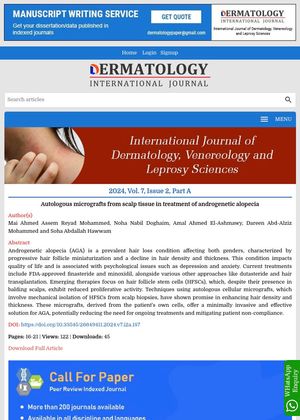Autologous Micrografts from Scalp Tissue in Treatment of Androgenetic Alopecia

TLDR Scalp tissue micrografts can effectively treat hair loss by increasing hair density and thickness.
The study explores the use of autologous micrografts derived from scalp tissue as a treatment for androgenetic alopecia (AGA), a common hair loss condition affecting both men and women. These micrografts, which are mechanically isolated hair follicle stem cells (HFSCs) from the patient's own scalp biopsies, have shown potential in increasing hair density and thickness. This method offers a minimally invasive alternative to current treatments like finasteride, minoxidil, and hair transplantation, and may reduce the need for ongoing treatments, thereby improving patient compliance.




